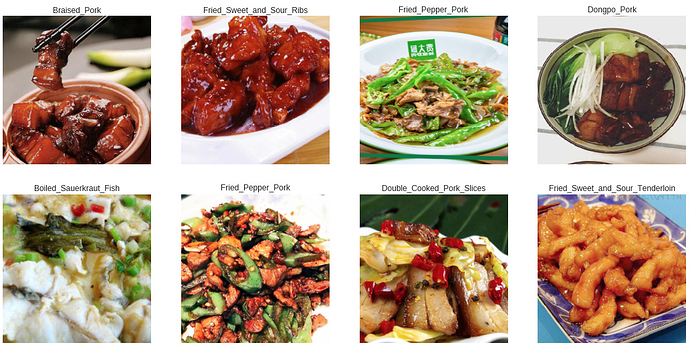I am a Chinese foodie who eat and cook a lot! So I’ve built a super ‘delicious’ model to identify some very similar Chinese food. And by ‘delicious’, I mean it really made me hungry when I looking over the datasets. Check this out!
Check this out!
I finally got a 79% accuracy which was not very outperforming but was beyond my expectation, because sometimes I can’t even tell the differences between them. However, I printed out the images that the model got the wrong answers on and I noticed some were noisy data that I haven’t cleaned out, also some were actually recognizable by human. So there still a large space for improvement.
To see how the model was doing on differentiating some similar food, I modified the original function most_confused() in fastai library and create a new function called most_confused_mutual() to return the model’s confusion between any of two classes. For example, one of the results were presented as: ('Braised_Pork', 'Dongpo_Pork', 4, 5, 9) which means the model incorrectly recognized Braised Pork as Dongpo Pork for 4 times and 5 times for the opposite case, and 9 times in total. This method can show us how similar some pairs of classes are, and help us to figure out whether it is a model problem or just the datasets are too difficult even for human.
I also proposed this as a new feature for fastai in a thread: most_confused_mutual().
Hope you enjoy Chinese food!
